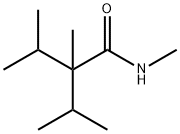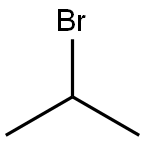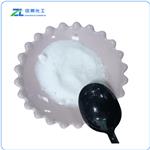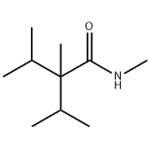Description
2-isopropyl-N,2,3-trimethylbutyramide is one nearly odorless white crystalline powder widely used as a coolant in medicinal preparations, oral care products, foodstuffs, cosmetics, and confection-eye products. It is an artificial synthesis cooling agent and could be synthesized by the Ritter reaction of 2,2-diisopropylpropionitrile (DIPPN) with methanol in the presence of acid. Compared with menthol, WS-23 is characterized by a continuous and long-lasting cooling and refreshing effect with no side effects of burning or stinging sensations. As an important additive in menthol cigarettes, WS-23 can cover up the bitter and astringent taste of cigarettes, make the cigarette feel fresh, improve the coordination and softness of cigarette smoke, and reduce the thorn in the mouth and throat. WS-23 is also compatible with other flavors and cooling agents[1].
Chemical Properties
2-Isopropyl-N-2,3-trimethylbutyramide has a cool, mint–menthol-type odor
Chemical Properties
N,2,3-Trimethyl-2-isopropylbutanamide is a white, crystalline powder,which gives a physiological
cooling sensation on skin or mucosa. It is mainly used to create cooling
and freshness in oral care preparations.
The material can be prepared by a Ritter reaction using N,2,3-trimethyl-2-
isopropylbutyronitrile as the starting material and alkylating agents such as, for
example, borates, carbonates, or phosphates.
Uses
Physiological coolant in foods, beverages, tobacco products, toiletries, cosmetics and pharmaceuticals.
Uses
2-Isopropyl-N,2,3-trimethylbutanamide is flavored compound and comprising the recount flavored compound for electronic cigarette liquid.
Definition
ChEBI: N,2,3-Trimethyl-2-(1-methylethyl)butanamide is a fatty amide.
Aroma threshold values
Aroma characteristics at 5.0%: slight cooling impact with little character.
Taste threshold values
Taste characteristics at 20 ppm: high-impacting cooling that lasts on the tongue and palate.
Trade name
Winsense WS-23 (Renessenz).
References
[1] Ze-Hong Wu. “Acute and subacute inhalation toxicity assessment of WS-23 in Sprague-Dawley rats.” Journal of Applied Toxicology (2021): 1826–1838.






